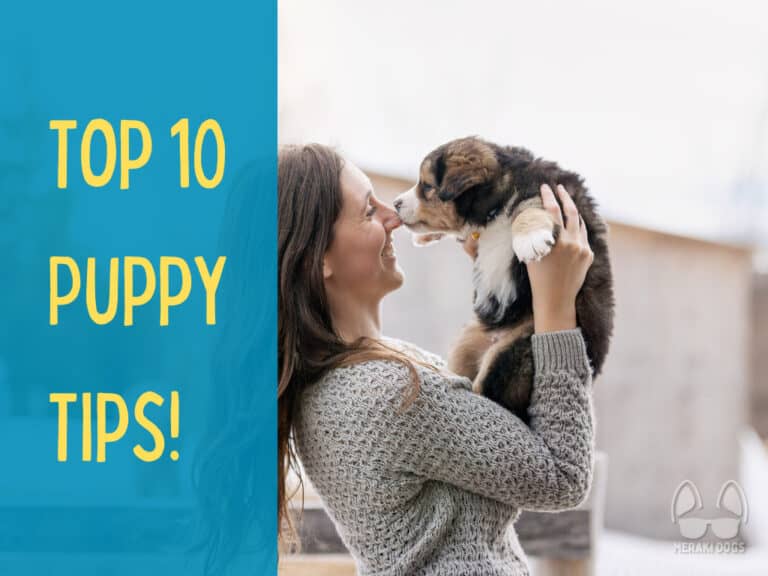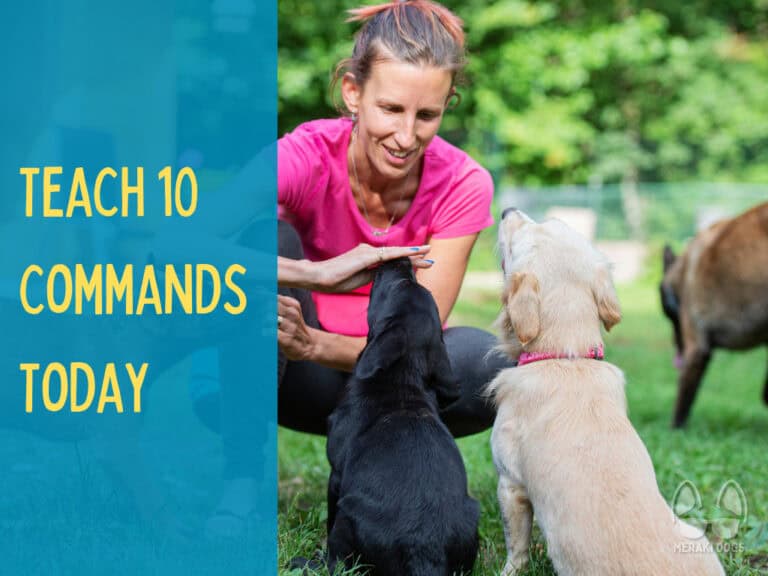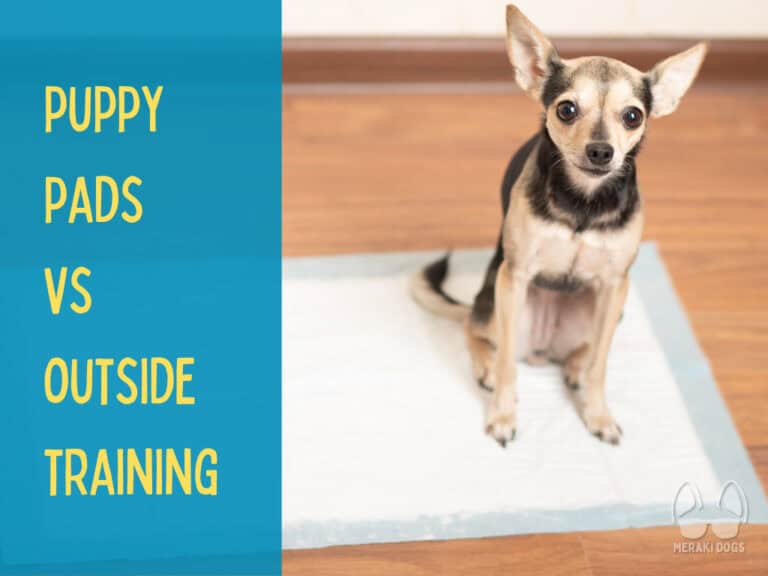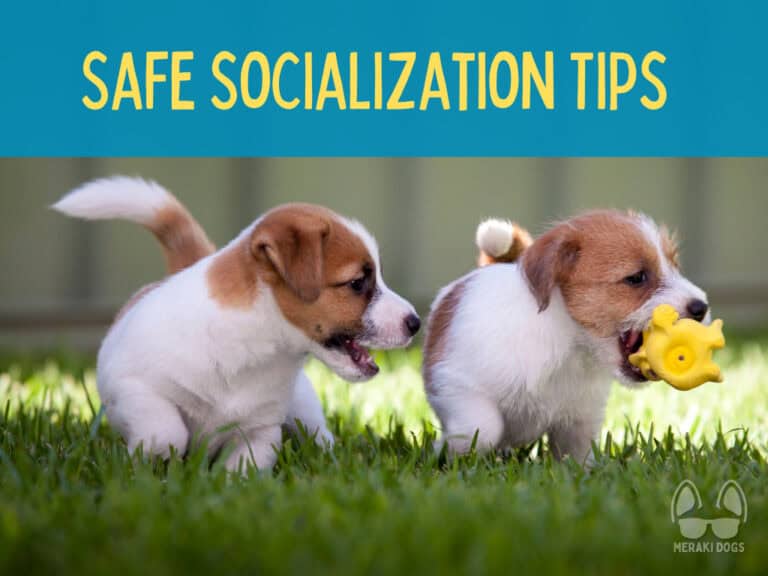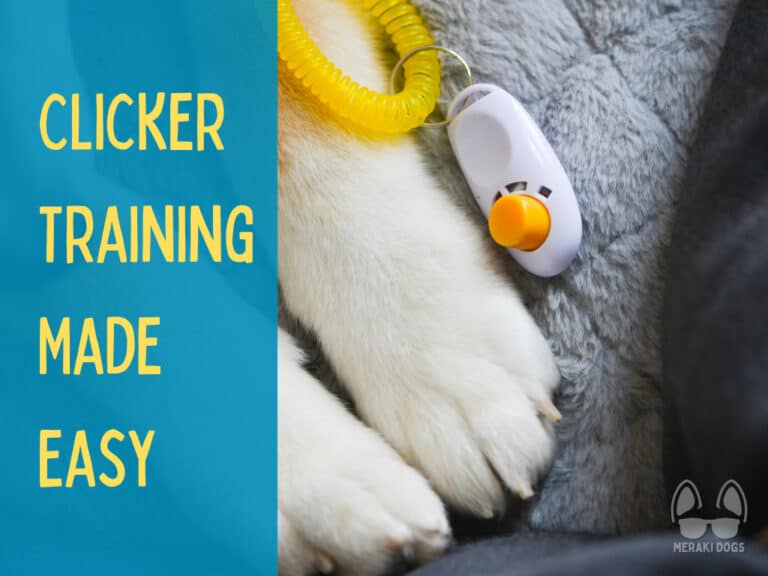How to Train Your Puppy to Use a Potty Pad: 5-Step Guide

Meraki Dogs may earn a small commission when you buy through links on this site at no cost to you. See our disclaimer here.
Potty training your puppy can feel like an uphill battle. From accidents in the middle of the night to those mysterious puddles you step in barefoot, it’s a challenge every dog owner faces. Potty pads are a convenient training tool that can help you through this process, particularly if you live in an apartment, have a busy schedule, or are dealing with bad weather. However, they’re not without their challenges, and it’s important to approach the process with the right mindset and tools.
This guide will break down how to train your puppy to use a potty pad, tackle common problems, and offer practical solutions to help you succeed.
Why Use Potty Pads for Puppy Training?
If outdoor training isn’t immediately feasible, potty pads can give your puppy a designated indoor spot to do their business while preventing your carpet or flooring from becoming a casualty of the learning curve.
Benefits of Potty Pads:
- Apartment-Friendly: If you live in a high-rise or don’t have easy outdoor access, potty pads provide an alternative that works for small spaces. Apartment potty training is much easier with pads, as you’re not running up and down stairs every hour.
- Safe for Puppies Without Vaccinations: Puppies can’t safely go to public high-traffic (for dogs) areas until they’ve had all their vaccinations. Potty pads provide a clean and controlled indoor environment during this time.
- Bad Weather Training: During extreme weather—whether it’s icy sidewalks or scorching heat—training your puppy indoors with a potty pad saves both of you a lot of stress. Potty training in winter is particularly challenging, making pads a practical option.
- Helps Establish a Routine: Pads can be the first step in teaching your puppy to use a consistent potty spot. For some dogs, this acts as a bridge to outdoor training later.
Despite these advantages, it’s essential to weigh the potential downsides of long-term potty pad use.

Are Potty Pads a Good Long-Term Solution?
While potty pads are great in the short term, they may not align with your long-term goals. Over-reliance can lead to training complications, especially if you plan to transition your dog to outdoor potty habits. Here are some key concerns:
Why Potty Pads Might Not Be Ideal Long-Term:
- Confusion for Your Dog: Dogs may generalize potty pads to other soft surfaces, like rugs or mats. If your dog has accidents on carpets after potty pad training, this could be the reason.
- Harder Transition to Outdoors: A puppy who’s only been trained to go indoors might resist outdoor potty training later. They’ve already learned that it’s okay to go inside.
- Environmental Impact: Disposable pads aren’t eco-friendly and contribute to waste. If you want a greener option, consider washable pads or an indoor grass pad as alternatives.
- Delays in Housebreaking: Relying too heavily on pads can delay the process of fully housebreaking your dog. Outdoor training is often faster and more effective.
If you decide to use potty pads, treat them as a short-term solution rather than the end goal.
Preparing for Potty Pad Training
A little preparation goes a long way when starting puppy potty training with pads. Having the right tools and setup can make the process smoother for both you and your pup.
What to Do Before You Start:
- Choose the Right Pads: Not all potty pads are created equal. Look for ones that are absorbent, large enough for your puppy, and durable. If you’re concerned about your dog chewing on the pads, opt for chew-proof potty pads or washable ones.
- Set Up a Designated Area: Pick a consistent spot in your home for the potty pad. Puppies thrive on routine, so having one location helps them associate that area with potty time. Keep it away from their food and sleeping areas to avoid confusion.
- Stock Up on Supplies: You’ll need treats for positive reinforcement, a leash for guiding your puppy to the pad, and an enzymatic cleaner for accidents. Enzymatic cleaners are key for neutralizing odors and preventing your puppy from returning to the wrong spot.
Having these elements ready ensures that your training sessions start off on the right paw.

How to Train Your Puppy to Use a Potty Pad
Follow the steps below for a simple process to pee pad training.
Step 1: Introduce the Potty Pad
Introduce your puppy to the pad by placing them on it after meals, naps, or playtime—these are the moments when puppies are most likely to need to go. Let them sniff and explore it. If they show signs like circling, sniffing the floor, or squatting (common potty signs), gently guide them to the pad.
Pro Tip: Use a leash if your puppy is distracted or wandering away from the pad. This helps them focus on the task at hand.
Step 2: Stick to a Potty Schedule
Young puppies need frequent potty breaks—usually every 30–60 minutes when they’re awake, and after waking up, eating, or drinking. Following a consistent potty schedule teaches your puppy when and where to go.
For example:
- Morning: First thing after waking up.
- After Meals: Puppies usually need to potty 10–15 minutes after eating.
- Playtime Breaks: After a session of play, take them to the pad.
Tracking how often your puppy needs to go potty and keeping to a schedule minimizes accidents.
Step 3: Reward Successful Potty Trips
The moment your puppy goes on the pad, shower them with praise and give them a treat. Immediate rewards reinforce the connection between the desired behavior and the positive outcome.
Bonus Tip: Use a cue like “Go potty” each time they use the pad. Over time, your puppy will associate the command with the action.
Step 4: Supervise and Redirect
Puppies are unpredictable, so close supervision is key. If you catch your puppy having an accident off the pad, calmly interrupt them and guide them to the pad. Avoid scolding—it doesn’t teach them what to do; it just makes them anxious. Clean up potty training accidents with an enzymatic cleaner to remove odors that might attract your puppy back to the same spot.
Step 5: Gradually Transition the Pad Area
As your puppy gets better at using the pad, you can reduce the size of the pad area or move the pad closer to the door if you plan to transition to outdoor training. For stubborn puppies, consider using potty training bells at the door as a signal for outdoor trips.
Tips for Effective Potty Pad Training
- Patience is Key: Puppies don’t learn overnight. Celebrate small wins and stay consistent with your routine.
- Crate Training Helps: A good crate training schedule can reinforce potty training by teaching your puppy to hold their bladder when unsupervised. Puppies instinctively avoid soiling their sleeping area, making crates a helpful tool.
- Keep the Pad Clean: Dogs dislike using a dirty potty area, so replace soiled pads promptly.
By combining consistency, patience, and positive reinforcement, your puppy will learn faster.

Common Challenges and Solutions
Frequent Accidents
If accidents happen often, revisit your potty training timeline. Puppies need frequent breaks—skipping one can lead to accidents. Supervise closely and reinforce the right behaviors.
Refusing to Use the Pad
For stubborn dogs, consider temporarily reducing their roaming space with baby gates or a crate. This encourages them to use the pad in their designated area.
Transitioning Outdoors
If you’re moving from pads to outdoor training, start by placing the pad near the door. Gradually take it outside and eventually remove it.
FAQs
Is puppy pad training a good idea?
Yes, puppy pad training can be a great short-term solution, especially for apartment dwellers, during bad weather, or when outdoor training isn’t immediately feasible. However, it’s best to transition to outdoor potty training when possible to establish long-term habits.
How long does it take to train a puppy to use a pad?
Most puppies can learn to use a potty pad within 2–4 weeks, depending on their age, consistency of training, and individual temperament. Younger puppies may take longer as they develop bladder control.
What age should a puppy be pad trained?
You can start introducing potty pads as early as 8 weeks. At this stage, puppies are beginning to develop some bladder control, and early training helps establish good habits.
How do I transition my puppy from pads to outdoor training?
Gradually move the potty pad closer to the door, then place it outside in a designated potty area. Over time, remove the pad altogether. Be consistent with outdoor potty breaks and use plenty of positive reinforcement.
Conclusion
Learning how to train your puppy to use a potty pad is a great way to manage puppy bathroom habits, especially in apartments or during challenging weather. However, potty pads should ideally be a stepping stone toward outdoor training. With a consistent routine, the right supplies, and plenty of patience, you’ll teach your puppy where to go—and avoid many common puppy house training mistakes.
Start your training today and set your puppy up for long-term success! If you found this guide helpful, sign up for our newsletter for more training tips and tricks.

